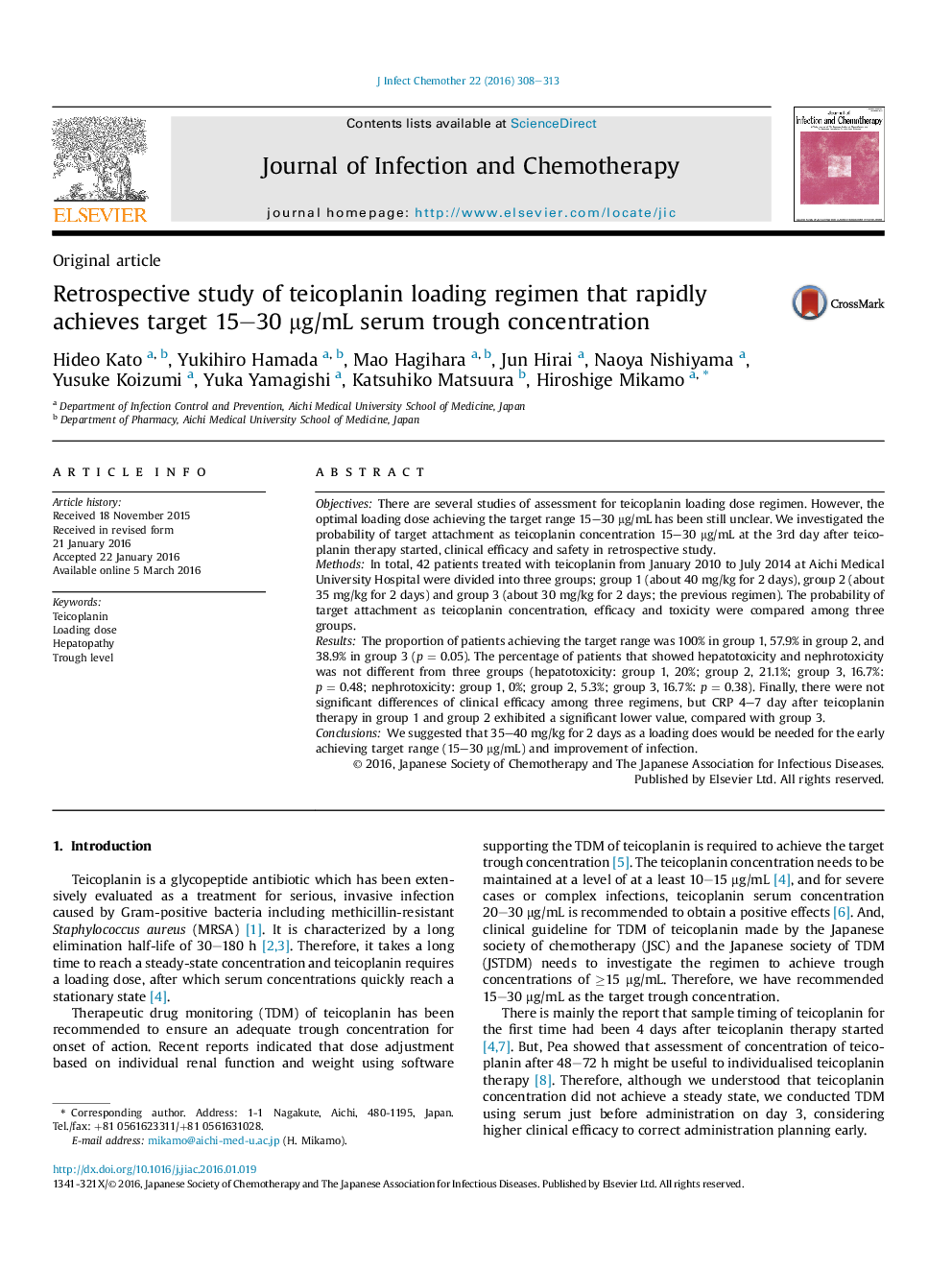| Article ID | Journal | Published Year | Pages | File Type |
|---|---|---|---|---|
| 3376705 | Journal of Infection and Chemotherapy | 2016 | 6 Pages |
ObjectivesThere are several studies of assessment for teicoplanin loading dose regimen. However, the optimal loading dose achieving the target range 15–30 μg/mL has been still unclear. We investigated the probability of target attachment as teicoplanin concentration 15–30 μg/mL at the 3rd day after teicoplanin therapy started, clinical efficacy and safety in retrospective study.MethodsIn total, 42 patients treated with teicoplanin from January 2010 to July 2014 at Aichi Medical University Hospital were divided into three groups; group 1 (about 40 mg/kg for 2 days), group 2 (about 35 mg/kg for 2 days) and group 3 (about 30 mg/kg for 2 days; the previous regimen). The probability of target attachment as teicoplanin concentration, efficacy and toxicity were compared among three groups.ResultsThe proportion of patients achieving the target range was 100% in group 1, 57.9% in group 2, and 38.9% in group 3 (p = 0.05). The percentage of patients that showed hepatotoxicity and nephrotoxicity was not different from three groups (hepatotoxicity: group 1, 20%; group 2, 21.1%; group 3, 16.7%: p = 0.48; nephrotoxicity: group 1, 0%; group 2, 5.3%; group 3, 16.7%: p = 0.38). Finally, there were not significant differences of clinical efficacy among three regimens, but CRP 4–7 day after teicoplanin therapy in group 1 and group 2 exhibited a significant lower value, compared with group 3.ConclusionsWe suggested that 35–40 mg/kg for 2 days as a loading does would be needed for the early achieving target range (15–30 μg/mL) and improvement of infection.
